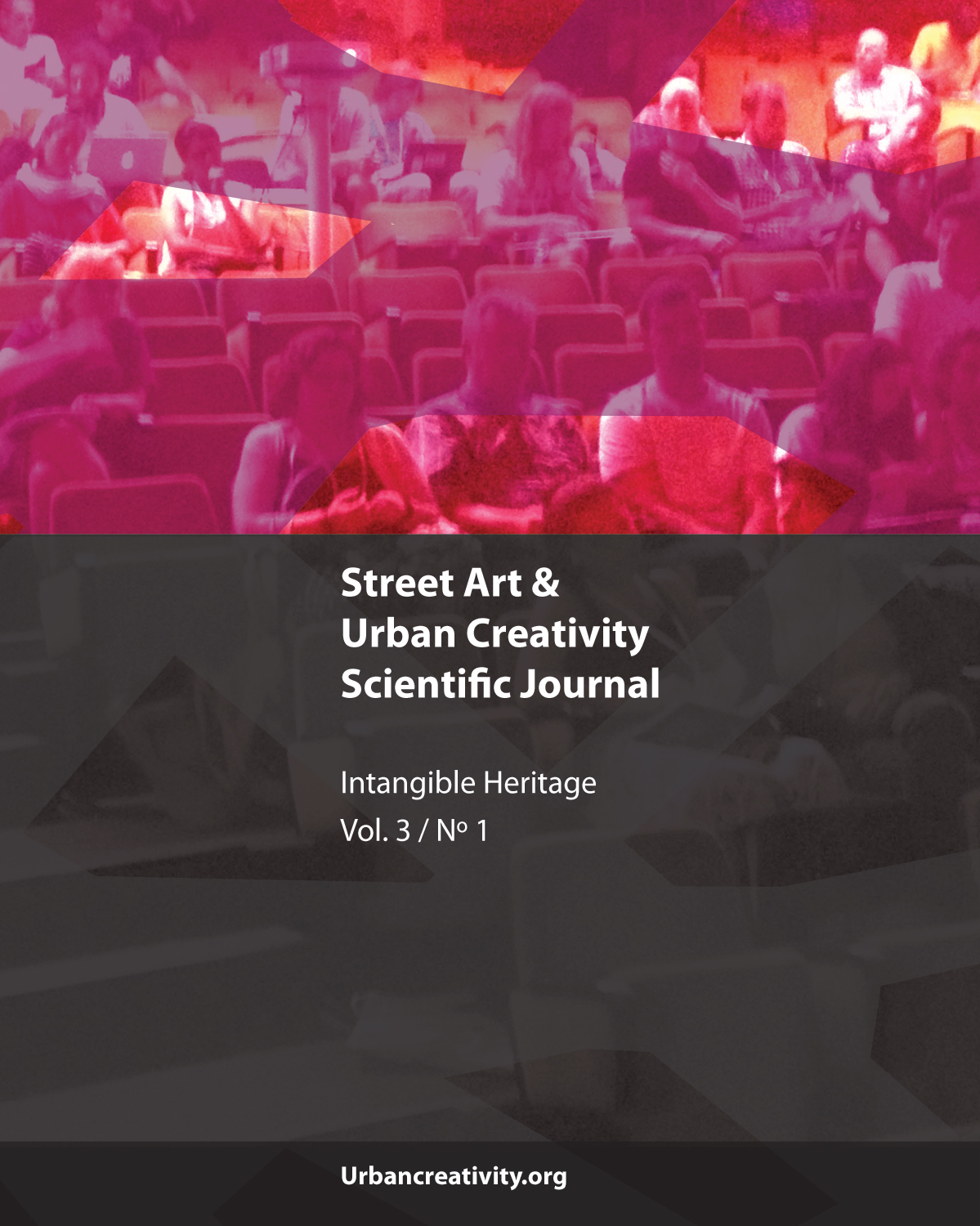Street art, heritage and embodiment
DOI:
https://doi.org/10.25765/sauc.v3i1.62Keywords:
Street art, Heritage, More-than-representational, Everyday life, Affect, EmbodimentAbstract
In recent years, street art and graffiti have been framed as items of cultural heritage. However, until now, there has been no clear agreement on the definition or conceptualization of street art as heritage. This research presents limitations of the conventional approaches to heritage and argues that street art and graffiti does not represent a dichotomy between tangible and intangible heritage or people and object, but instead represents an inseparable relationship of the two. This study calls for greater engagement with more-than-representational approaches in studying the relationship between street art and heritage. More-than-representational approaches address street art’s crucial relationships with everyday life and change, as well as its relational, performative, embodied and affective components. Based on more-than-representational approaches, this research conceptualizes street art as a heritage experience in terms of embodiment, affect and everyday performativity. Furthermore, by situating the concept of embodiment within the case of Bergen, Norway, the paper provides an example of how the reasons and meanings behind the preservation of street artworks can be captured within a local context.
Downloads
Global Statistics ℹ️
|
235
Views
|
76
Downloads
|
|
311
Total
|
|
Downloads
Published
How to Cite
Issue
Section
License
Those authors who publish in this journal accept the following terms:
-
Authors retain copyright.
-
Authors transfer to the journal the right of first publication. The journal also owns the publishing rights.
-
All published contents are governed by an Attribution-NoDerivatives 4.0 International License.
Access the informative version and legal text of the license. By virtue of this, third parties are allowed to use what is published as long as they mention the authorship of the work and the first publication in this journal. If you transform the material, you may not distribute the modified work. -
Authors may make other independent and additional contractual arrangements for non-exclusive distribution of the version of the article published in this journal (e.g., inclusion in an institutional repository or publication in a book) as long as they clearly indicate that the work was first published in this journal.
- Authors are allowed and recommended to publish their work on the Internet (for example on institutional and personal websites), following the publication of, and referencing the journal, as this could lead to constructive exchanges and a more extensive and quick circulation of published works (see The Effect of Open Access).













